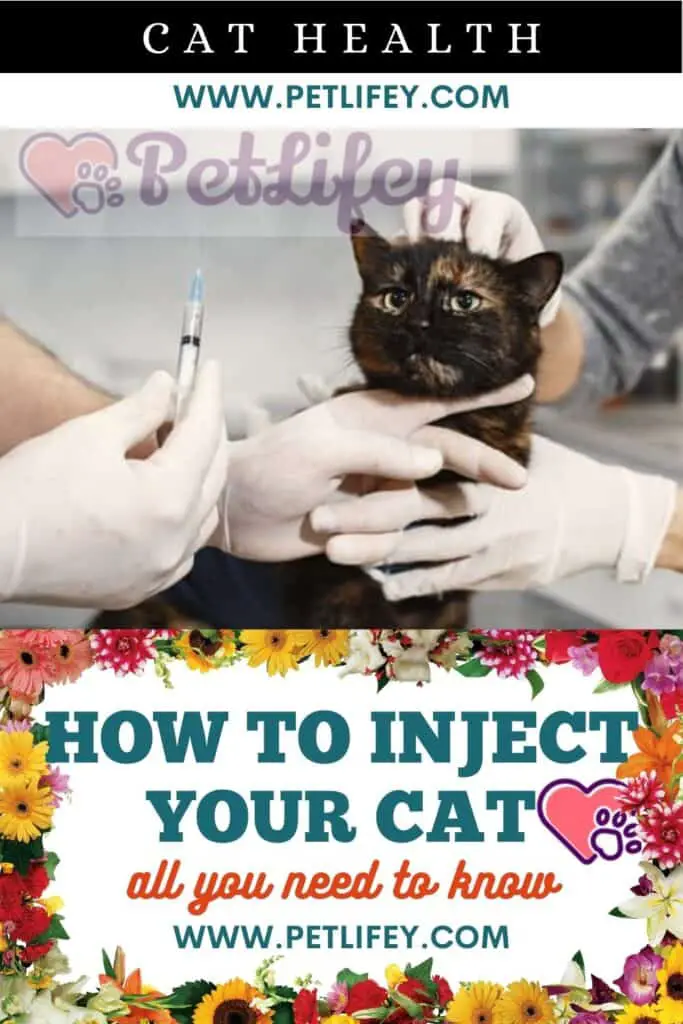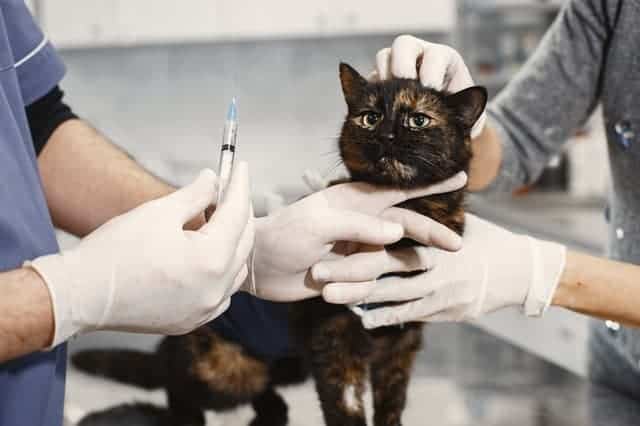
Anyone who has a pet knows that sooner or later they will have to try their hand at a syringe. Do you know how to give the cat an injection? Here’s what to know.
If you have a cat, sometimes it is necessary to take off your daily clothes and put on those of a… nurse. Seriously, there are situations in which we may be called to perform small operations on our pets, without going to the vet. For example, do you know how to give the cat an injection? Here are some little tips to follow.
Puncture the cat: when you can
Giving your cat a bite is one of the possibilities you may have to face in your life. If you love these animals, and maybe you have more than one, it may happen that over time you may need to resort to an injection. Of course, there is a veterinarian, but it is not always possible or easy to go there.
It being understood that when the cat is sick it is always necessary to use the services of a professional, sometimes it may be necessary for you to… wear the coat. Seriously, in some cases where it is necessary to give the cat a substance by injection.
In particular, if it is a therapy that lasts a few weeks, it may be impossible to go to the vet every day, due to the commitments of daily life. For this it can be very useful to learn how to give a cat an injection.
Warning: better limit yourself to subcutaneous injections, which are easier to perform. For intramuscular ones, it is always better to contact your veterinarian. These are operations that require adequate knowledge of the cat’s muscles and different dexterity.
Prepare the syringe
Now let’s move on to the description of the procedure. First you will need to prepare the injection, following the instructions carefully (many substances are contained in two different containers, one in powder, the other in liquid, which must be mixed). Aspirate the prescribed dose for administration to the cat.
Over time you will learn to perform these operations mechanically, especially if you have to give injections daily or regularly (the classic example is to administer insulin to a diabetic cat).
Calm the cat

After preparing the syringe you will need to prepare the cat for the sting. This could be more or less difficult depending on the experience you both have. In short, it could be the first time for you, as well as for the cat. If, on the other hand, he has already had injections at the vet, he may not be so happy to see the syringe.
Those who have more experience on the subject, even with dogs, should be more facilitated; even though cats are smaller, they have less thick skin and are more sensitive. In short, the injection to the dog could be a little easier. But some things are very similar in the approach to be taken, such as calming and putting the animal at ease.
So take the cat and give him a lot of cuddles; let him see the syringe and let him smell it. Try to associate the sight of the object with a pleasant experience, which is your cuddles.
After that you will have to choose the right position to give the cat the injection. A flat but solid surface, such as the classic table, is ideal. Being a small animal, you may want to give it the injection even while holding it on your lap. In case of a sudden reaction from the cat, however, you would be more exposed to its scratches. If possible, get someone else to help you.
How to thread the needle
Choose the part of the cat’s body where you want to thread the needle. Usually you opt for the back, where the cat has more skin, or for the hips. Disinfect the chosen part, at least a quarter of an hour before the operation and making sure that the cat does not get dirty in this period of time.
After that you can move on to the actual puncture. Grab the skin of the cat with the index finger and thumb of the hand in which you do not have the syringe, and lift it in such a way as to form a sort of pouch. In that flap of skin you will have to insert the needle perpendicularly, gently but without hesitation.
Make sure you inject all of the substance. If you see blood inside the syringe, pull it out – most likely you have hit a blood vessel in the cat, so you’ll have to choose another spot. When you are done observe the cat for a few minutes to check that he is well and has no allergic reactions.






